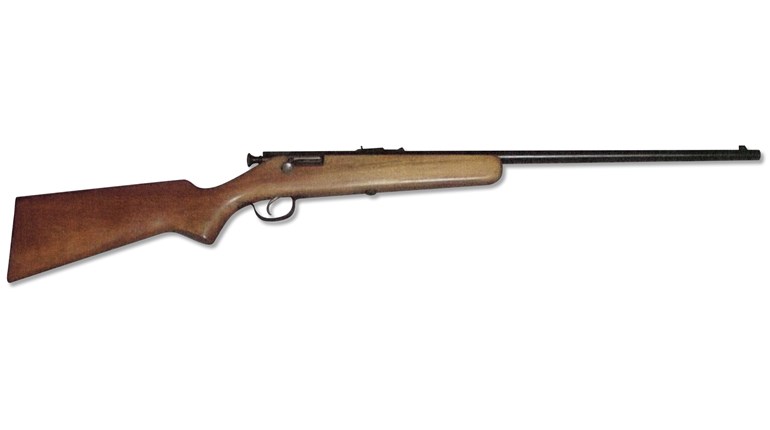
And now for the external frame components: We begin with the ejector, and while the process is pretty straightforward, the likelihood of encountering potential pitfalls still exists.
Installing an ejector is simple, but, at times, can require some minor fitting. First and foremost, you need to verify you have the correct type of ejector for your build. Case in point: Even though my pistol is chambered for .45 ACP—as with the firing pin—my Caspian components require a 9 mm/ .38 Super ejector. (I discovered this after the fact. The moral of this story: Even gimpy gunwriters goof up.) Ejectors for .45 ACP and 9 mm/.38 Super differ. Know what you need and get the right one ahead of time.
Begin by chasing the frame’s ejector-leg holes with a finger-twirled drill bit of appropriate size to verify they are free of burrs/obstructions. Then blast the area clean with canned air duster or an air compressor to make sure.

The part will function perfectly well—without being permanently affixed—for the purpose of dry-firing the pistol. With the slide removed, put the ejector in its place on the frame. (The fit should be tight, so have your non-marring/rubber mallet handy.) It’s possible for the bottom of the ejector to come in contact with body of the magazine. Check this by inserting an empty magazine and verify it locks in place. If the magazine follower touches the ejector, take a small file or stone and remove a small amount of material from the bottom of the ejector.
Once you gain the necessary clearance, with the ejector still installed insert a hand-held drill bit of the appropriate size—or similar marking tool—into the ejector-pin hole from the left to mark where the ejector pin intersects the front leg of the ejector.

Remove the ejector and examine the part for the mark, which indicates where the hole intersects. File a tiny clearance notch on that spot using a small round file. Go slowly—a few file strokes at a time—then reinstall the ejector and look through the frame to see how much of the leg is still visible. Eventually you will see daylight, which suggests you have enough clearance to install the ejector pin.
Begin installing the pin with a roll-pin starter punch and finish with a regular punch. Make sure the pin is flush with the frame or slightly recessed to avoid binding on the slide. Reinstall the barrel/slide assembly on the frame. There should be sufficient clearance for the ejector to slide into the corresponding notch in the slide. If not, you may have to reduce the ejector's height or carefully remove metal from elsewhere on the part until the slide can be installed on the frame.

I know what you’re thinking: Make an indicator mark, for clearance, create the clearance and install the roll pin to anchor the roll pin in place. Why wait so long to install the ejector, and where’s the potential pitfall?
When I trial installed the ejector on my Essex frame, I discovered the back of the ejector overlapped the back of the frame, which revealed I removed too much metal from the top of the tang when I was in the blending phase of my installing my grip safety, forcing the ejector to be shortened beforehand. Yes, I could have permanently installed it and fired up the dremel and slowly shaved down the back until it was even, but the dremel is how I wound up in this pit—plus it leaves the potential for unequal height between both tangs.
So why not install the ejector to fitting/blending the beavertail? Great idea—if you know the ejector’s dimensions are appropriately sized to allow the slide to be installed on the frame. Otherwise you’ll find yourself having to removing the ejector in short order.
Normally the next step would be to install the plunger tube, but to save the hassle the frame I selected featured an integral model, so the next entry will pertain to the installation and fitting of the thumb safety.






































